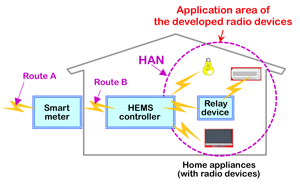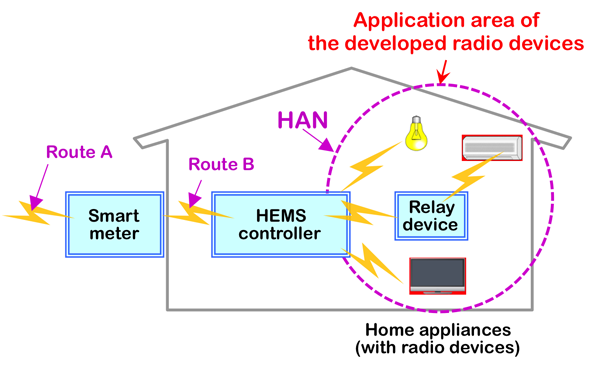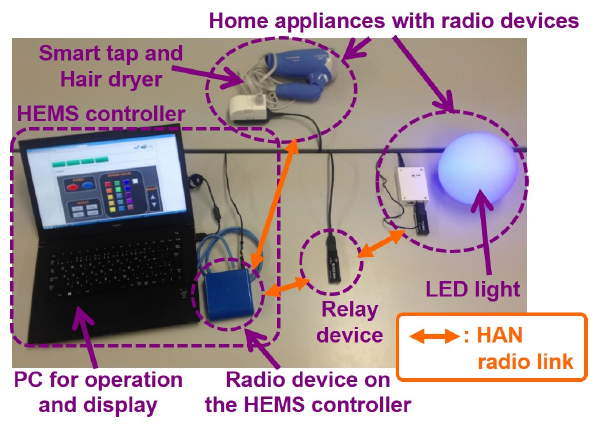NICT has developed the world's first radio devices that support the Wi-SUN profile for HAN (Home Area Network). The Wi-SUN Alliance has recently finalized the Wi-SUN certification specification for HAN that provides radio connectivity between a HEMS (Home Energy Management System) controller and home appliances by deploying the 920 MHz radio links compliant with the IEEE 802.15.4g standard.
NICT has developed the radio devices that implement the specifications and successfully conducted the proof test of multiple appliance authentications by a HEMS controller with assumed relay transmission among those appliances.






























